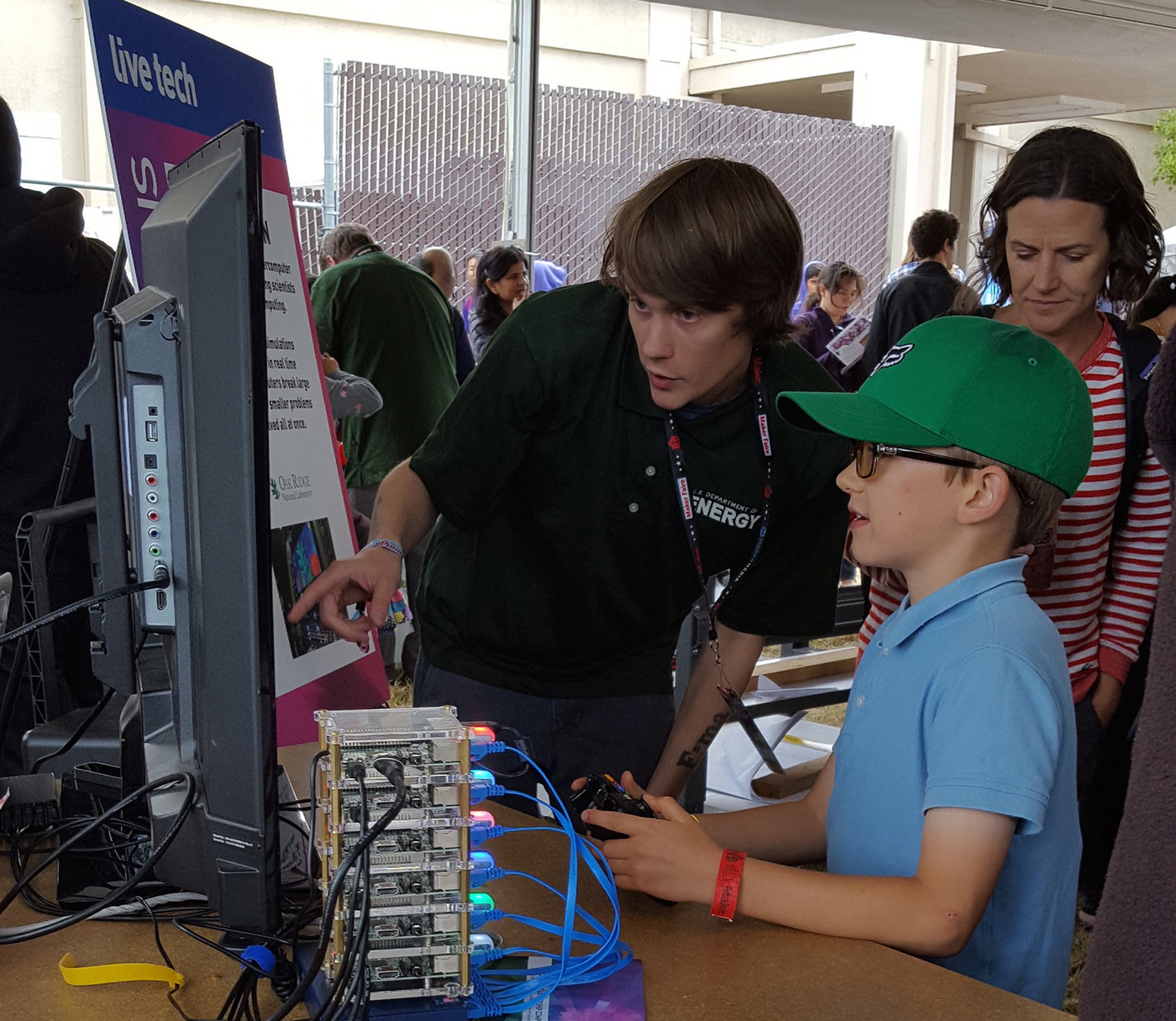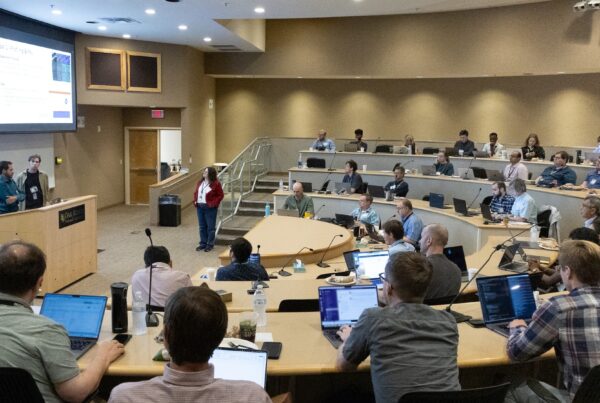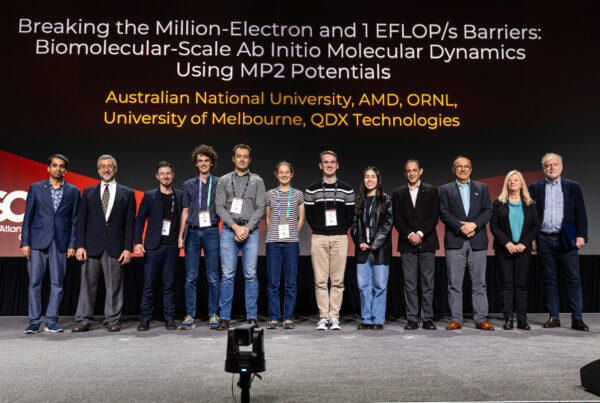
OLCF User Support Specialist Adam Simpson explains how Tiny Titan works during the 2016 Bay Area Maker Faire, which ran May 20–22 in San Francisco. OLCF staff modified Tiny Titan to take advantage of Leap Motion sensors that allowed students to control the simulation by using their hands.
In 2006, Make: magazine created an event aimed at bringing together its DIY-inspired readers to share homemade innovations ranging from life-sized robots to powerful small-scale computers. Such events, dubbed Maker Faires, have grown exponentially, with small events regularly happening in countless locations and annual meetings taking place in large cities from California to Singapore.
No strangers to science and technology innovations, US Department of Energy (DOE) employees converged on the San Francisco Bay Area for the 22nd annual Bay Area Maker Faire, which ran May 20 to May 22.
“The spirit of the event is to be playful,” said Oak Ridge Leadership Computing Facility (OLCF) Visualization Support Specialist Kat Engstrom. “These projects aren’t seen as work, but rather as a way to express yourself.” The OLCF is a DOE Office of Science User Facility located at DOE’s Oak Ridge National Laboratory.
Engstrom joined OLCF User Support Specialists Adam Simpson, Robert French, and Matt Belhorn and National Center for Computational Sciences Director Jim Hack for the weekend event.
The OLCF staff took a modified version of Tiny Titan—a mini parallel computer made of several Raspberry Pi computers that helps educate students about the principles of parallel computing—to inspire a new generation of high-performance computing (HPC) enthusiasts.
“We wanted to bring something that would appeal to the hackers and the makers, something that would make our demonstration more interactive, so we implemented the Leap Motion sensor,” Belhorn said. Typically, OLCF staff members use an Xbox controller to control the fluid-dynamics simulation running on Tiny Titan. It gives them the ability to show students how adding or subtracting processors can affect a simulation.
For the Maker Faire, though, OLCF recoded the program to work with Leap Motion, which uses a camera and several infrared sensors, allowing students to control the ball in the Tiny Titan simulation with their hands.
“You have kids coming up to play with it, then we introduce ourselves and talk about what Tiny Titan is,” Belhorn said. “It’s a high-performance computing tool, a demonstrator of HPC principles. We then get to introduce people to how the Raspberry Pis are communicating to do the physics simulation they’re playing with and then make the connection that it’s the same way that Titan works.”
Engstrom also commented on how many children she interacted with who already knew about some aspects of computing. “The parents were more likely to ask questions, while the kids just loved playing with it and were far more likely to experiment with the system and draw conclusions about how six Raspberry Pis are better for a simulation than just one.”
Oak Ridge National Laboratory is supported by the US Department of Energy’s Office of Science. The single largest supporter of basic research in the physical sciences in the United States, the Office of Science is working to address some of the most pressing challenges of our time. For more information, please visit science.energy.gov.






